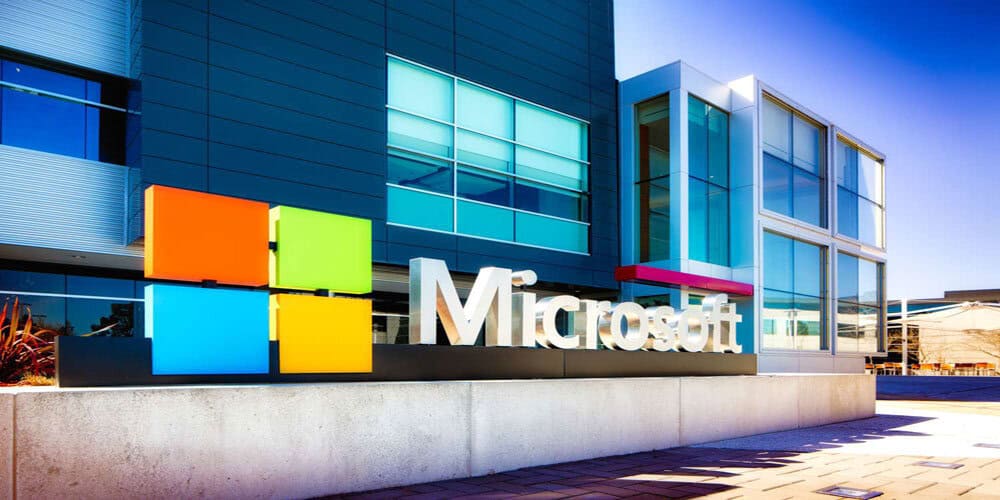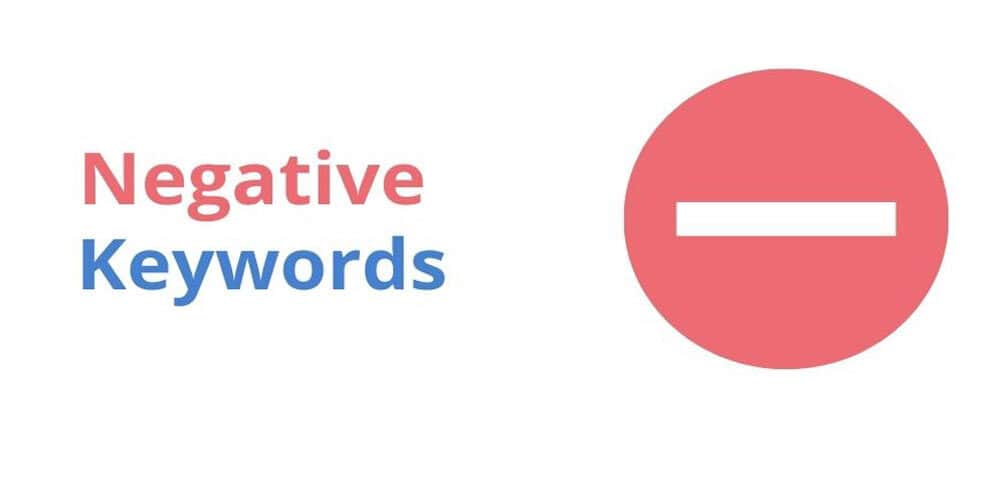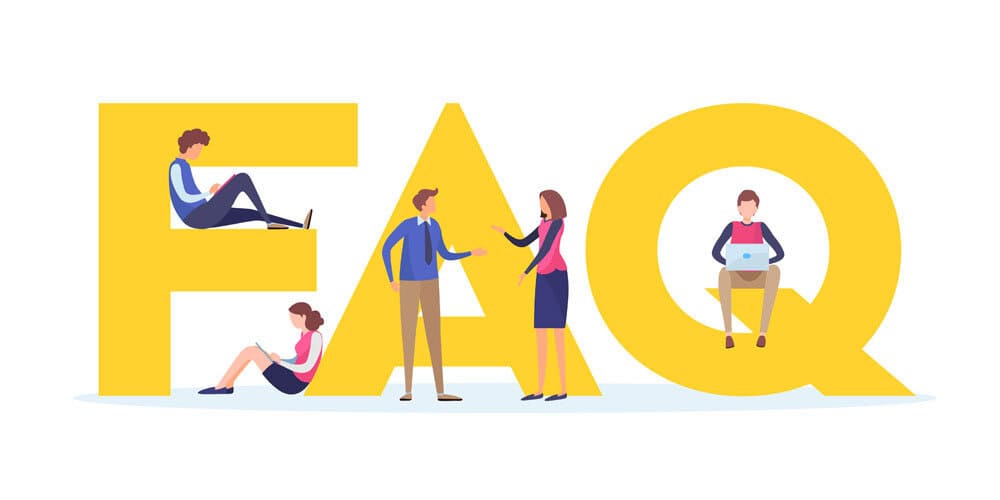Attracting New Business with A Proactive Digital Marketing Campaign

The business world is rapidly changing, and digital marketing has become an essential part of any successful marketing campaign. The rise of social media, mobile devices, and search engines has made it easier for businesses to reach potential customers. However, attracting new business requires more than just having a website or social media presence. A proactive digital marketing campaign is essential to ensure that businesses reach their target audience and stand out from the competition. In this article, we will discuss the steps businesses can take to create a proactive digital marketing campaign that attracts new business. Step 1: Define Your Target Audience The first step in creating a proactive digital marketing campaign is to define your target audience. Who are the people that you want to reach? What are their interests, values, and pain points? By understanding your target audience, you can create content that resonates with them and speaks directly to their needs. There are many ways to define your target audience, including: >>> Conducting market research >>> Analysing your existing customer base >>> Creating buyer personas Market research involves gathering information about your industry, competitors, and potential customers. This can be done through surveys, focus groups, and online research. Analysing your existing customer base can also provide valuable insights into the demographics, interests, and behaviours of your target audience. Finally, creating buyer personas involves creating fictional characters that represent your ideal customer. This can help you better understand their needs, motivations, and pain points. Step 2: Develop a Strong Brand Identity The next step in creating a proactive digital marketing campaign is to develop a strong brand identity. A strong brand identity helps businesses stand out from the competition and build trust with potential customers. Your brand identity should be consistent across all channels, including your website, social media, and advertising. To develop a strong brand identity, businesses should consider the following: >>> Defining your brand voice and tone >>> Creating a brand style guide >>> Developing a unique visual identity Your brand voice and tone should reflect your company’s personality and values. This can be formal, informal, humorous, or serious, depending on your target audience and industry. Creating a brand style guide can help ensure consistency in your branding, including your logo, colours, typography, and imagery. Developing a unique visual identity can also help your brand stand out and create a memorable impression with potential customers. Step 3: Create Engaging Content Creating engaging content is essential to attract new business and build brand awareness. Content can take many forms, including blog posts, videos, social media posts, and email marketing campaigns. To create engaging content, businesses should consider the following: >>> Creating content that addresses your target audience’s pain points >>> Using a variety of content formats >>> Incorporating visual elements, such as images and videos Creating content that addresses your target audience’s pain points is essential to attract their attention and provide value. Using a variety of content formats can also help keep your content fresh and engaging. Finally, incorporating visual elements can help make your content more engaging and memorable. Step 4: Optimise Your Website for Search Engines Search engine optimisation (SEO) is the process of optimising your website to rank higher in search engine results pages (SERPs). Optimising your website for SEO is essential to attract new business and increase your online visibility. To optimise your website for SEO, businesses should consider the following: >>> Conducting keyword research >>> Creating high-quality content >>> Optimising your website’s structure and navigation Keyword research involves identifying the keywords and phrases that potential customers are searching for related to your products or services. Creating high-quality content that incorporates these keywords can help improve your website’s ranking in SERPs. Optimising your website’s structure and navigation can also help search engines better. Step 5: Utilise Social Media Social media is a powerful tool for businesses to reach their target audience and promote their brand. There are many social media platforms available, including Facebook, Twitter, Instagram, and LinkedIn. To effectively utilise social media, businesses should consider the following: >>> Choosing the right social media platforms for their target audience >>> Creating a social media content calendar >>> Engaging with their audience through comments and messages Choosing the right social media platforms for your target audience is essential to ensure that your content reaches the right people. Creating a social media content calendar can help you plan and schedule your content in advance, ensuring that you post consistently and effectively. Engaging with your audience through comments and messages can also help build relationships and trust with potential customers. Step 6: Run Paid Advertising Campaigns Paid advertising campaigns, such as pay-per-click (PPC) advertising, can be an effective way to reach potential customers and increase website traffic. To run successful paid advertising campaigns, businesses should consider the following: >>> Choosing the right platform and ad format >>> Targeting the right audience >>> Creating compelling ad copy and visuals Choosing the right platform and ad format depends on your target audience and marketing goals. For example, Facebook ads may be more effective for B2C businesses, while LinkedIn ads may be more effective for B2B businesses. Targeting the right audience is essential to ensure that your ads reach the right people. Creating compelling ad copy and visuals can help increase click-through rates and conversions. Step 7: Measure and Analyse Results Measuring and analysing the results of your digital marketing campaign is essential to understand what’s working and what’s not. To effectively measure and analyse your results, businesses should consider the following: >>> Setting clear goals and KPIs (key performance indicators) >>> Using analytics tools to track website traffic and engagement >>> Analysing the data and adjusting the campaign accordingly Setting clear goals and KPIs can help you track the success of your campaign and make data-driven decisions. Using analytics tools, such as Google Analytics, can help you track website traffic, engagement, and conversions. Analysing the data and adjusting the campaign accordingly can help you optimise
Why Quality Content is Key to SEO Success

In today’s digital age, having a website is not enough to ensure online success. With millions of websites competing for attention, it’s essential to have a solid SEO strategy that will help your website stand out in search engine results pages (SERPs). And while there are many factors that go into creating an effective SEO strategy, one of the most important is quality content. In this article, we’ll explore why quality content is key to SEO success and provide tips for creating it. Why Quality Content is Key to SEO Success Google rewards quality content Google’s mission is to provide users with the most relevant and high-quality content possible. This means that the search engine giant rewards websites that publish quality content with higher rankings in search results. When you create quality content, you’re not only providing value to your audience but also signalling to Google that your website is authoritative and trustworthy. Quality content attracts backlinks Backlinks are a crucial factor in SEO success, as they signal to search engines that other websites consider your content valuable and authoritative. When you create quality content, other websites are more likely to link to it, which can significantly boost your website’s search engine rankings. Quality content increases user engagement User engagement is another important factor in SEO success. When users spend more time on your website and engage with your content, it signals to Google that your website is providing value to your audience. This can result in higher rankings in search results and increased visibility for your website. Quality content helps you stand out in a crowded market With millions of websites vying for attention, it can be challenging to stand out in a crowded market. However, when you create quality content that provides value to your audience, you set yourself apart from the competition. This can help you build a loyal following and establish your website as an authoritative source in your industry. Quality content leads to more conversions Ultimately, the goal of SEO is to drive conversions and increase revenue. Quality content can help you achieve this by providing your audience with the information they need to make informed decisions. When you create content that is informative, engaging, and relevant to your audience, you’re more likely to convert visitors into customers. How to Create Quality Content for SEO Success Conduct keyword research Before you start creating content, it’s essential to conduct keyword research to identify the keywords and phrases that your target audience is searching for. This will help you create content that is relevant to their interests and needs and improve your chances of ranking for those keywords in search results. Focus on user intent When creating content, it’s crucial to focus on user intent. This means understanding the questions and needs that your target audience has and creating content that addresses those needs. By focusing on user intent, you’ll create content that is more likely to attract and engage your target audience, leading to higher search engine rankings and more conversions. Create unique and valuable content To stand out in a crowded market, your content needs to be unique and provide value to your audience. Avoid creating generic or duplicate content, as this can harm your search engine rankings and turn off your audience. Instead, focus on creating content that provides new insights, solutions to problems, or a unique perspective on a topic. Use a variety of content formats Creating content in a variety of formats can help you attract a broader audience and keep them engaged with your website. Consider using a mix of blog posts, videos, infographics, podcasts, and other formats to create a diverse range of content that appeals to different learning styles. Optimise your content for search engines Quality, authoritative content is the number one driver of your search engine rankings and there is no substitute for great content—this is especially true when doing SEO marketing. Quality content created specifically for your intended user increases site traffic, which improves your site’s authority and relevance. Search engines make frequent updates. Business goals can change quickly too. But it can take an average of three to six months for a post to rank on Google. Without a strategy, you might find yourself investing in your blog but not seeing a boost in SEO. Set up specifically to assist small to medium business owners achieve their digital marketing ambitions, we have been established since 2002, and have been successfully meeting and exceeding our customer’s expectations since then. One size SEO doesn’t fit all Our approach to SEO recognises that one size does not fit all and every client is different. Our aim is to work within your budget and provide complete transparency. This approach delivers greater value for both parties and typically fosters long term partnerships. Our Search Engine Optimisation services include: Organic Search, On-Page SEO, Link Building, Keyword Research, and SEO Activity Reports. They offer an affordable & effective service leading to an increase in sales, website traffic, and customer acquisition for your business. Remember, people are searching for your products and services every day. A strong campaign with our Search Engine Optimisation Services will lead to new business growth. When it comes to a typical small business online marketing campaign, Local SEO is arguably the most important component. This is a great way to work your way up in the search engine rankings, and stay there. When people search for the products and services you offer, you’ll be the first name they see and the first click, call or contact they make. Around 86% of customers use Search Engines to discover a businesses, demonstrating the importance of connecting with these customers. Our Local SEO experts will ensure that your business is seen by more of your local target audience, helping you achieve more local traffic than ever before. If you are looking to conquer your Local market, then Local SEO is the route for you. Get the people looking for your services
Support Local Business with Local SEO

In today’s world, consumers are becoming more and more conscious of where they spend their money. One trend that has gained popularity in recent years is the support of local businesses. Local SEO, or search engine optimisation, is an essential tool for local businesses to reach and connect with their customers. Here are 1000 words on why local businesses should invest in local SEO and how it can help them grow. What is Local SEO? Local SEO is a digital marketing strategy that focuses on increasing the visibility of a business to local customers. It involves optimizing a business’s website and other online assets to rank higher in local search results. Local SEO includes tactics such as claiming and optimizing a Google My Business listing, building local citations and creating localised content. Why is Local SEO important for Local Businesses? Increased visibility to local customers Local SEO helps local businesses to appear in the search results of customers who are searching for businesses in their local area. This makes it easier for potential customers to find and connect with the business, leading to increased visibility and foot traffic. Improved search engine rankings By optimizing their website and other online assets for local search, local businesses can improve their search engine rankings. This means that they will appear higher in search results for relevant local queries, making it more likely that potential customers will click through to their website. Enhanced user experience Local SEO also focuses on improving the user experience for local customers. This includes making sure that the business’s website is mobile-friendly and easy to navigate, as well as providing accurate and up-to-date information about the business’s location, hours, and services. Increased customer trust and loyalty When a local business appears in local search results, it can help to build trust and loyalty with local customers. This is because local customers are more likely to trust and support businesses that are part of their community and have a physical presence in their area. How can Local Businesses improve their Local SEO? Claim and optimize your Google My Business listing Google My Business is a free tool that allows businesses to manage their online presence on Google. By claiming and optimizing your Google My Business listing, you can provide accurate and up-to-date information about your business to potential customers, including your location, hours, and services. Build local citations A local citation is a mention of your business’s name, address, and phone number (NAP) on other websites, such as directories, social media platforms, and review sites. Building local citations can help to improve your business’s visibility in local search results and also helps to build trust and credibility with potential customers. Create localized content Creating localized content, such as blog posts or landing pages, can help to improve your business’s visibility in local search results. This is because search engines prioritize content that is relevant to the user’s search query and location. Localized content can also help to build trust and loyalty with local customers by demonstrating your knowledge of and connection to the local community. Get customer reviews Customer reviews are an important factor in local SEO, as they can help to improve your business’s visibility and reputation in local search results. Encourage your customers to leave reviews on your Google My Business listing, as well as on other review sites such as Yelp and TripAdvisor. Use local keywords Using local keywords, such as your city or neighborhood name, can help to improve your business’s visibility in local search results. Make sure to include local keywords in your website content, meta descriptions, and other online assets. The Way Ahead Investing in local SEO is an essential tool for local businesses to connect with and grow their customer base. By improving their visibility in local search results, local businesses can increase foot traffic and build trust and loyalty with local customers. Around 86% of customers use search engines to discover local businesses, demonstrating the importance of connecting with these customers. Our local SEO experts will ensure that your business is seen by more of your local target audience through our local SEO services. Whether you’re a small-medium independent business, a new business or an established company, you can achieve successful business growth using effective local SEO strategies.
Microsoft Announces ChatGPT Capabilities Coming To Bing

Microsoft has announced that it is bringing cutting-edge AI capabilities to its Bing search engine, with the addition of a new ChatGPT-like feature. It revealed its plans for integrating ChatGPT at a private event held at its Redmond headquarters today, which centered around its partnership with OpenAI. Unlike recent virtual events, this particular press conference was held in person and not broadcast online. Microsoft Integrating ChatGPT During the event, Microsoft CEO Satya Nadella highlighted the significance of this new feature and how it will revolutionise the way people interact with search engines. “I think this technology is going to reshape pretty much every software category,” says Nadella. Nadella proclaimed, “The race starts today,” and Microsoft is going to “move and move fast.” The event attendees were given a sneak peek at the latest search experience, which Microsoft refers to as “your AI-powered copilot for the web.” This new experience combines the all-new Bing search engine and Edge web browser, which are designed to complement each other. Nadella explained that the new Bing would provide direct answers to questions and encourage users to be more creative. He also stated that the current search experience is not working as efficiently as it should be, as 40% of the time, people click on search links and then immediately click back. This clearly indicates that the search experience needs to be updated and improved. Nadella claims that the search engine user experience hasn’t changed in 20 years, and it’s time for Microsoft to adapt. The New Bing The new Bing is powered by a next-generation language model from OpenAI, which has been specifically customized for search purposes. It’s even more powerful than the ChatGPT model. Microsoft has implemented a new way of working with OpenAI called the “prometheus model,” which enhances the relevancy of answers, annotates them, keeps them up to date, and more. The search index has also been improved by applying the AI model to the core search algorithm, which Nadella calls the largest jump in relevance ever. It runs on a new user experience with an expanded search box that accepts up to 1,000 characters. Examples shared during the event look exactly like recent leaks. The new Bing includes a chatbot that behaves similarly to ChatGPT, allowing users to interact with Bing in a natural language. Bing’s new ChatGPT-like feature will take it a step further by allowing users to have an actual conversation with the search engine, with the ability to follow up on previous questions and provide more context for their search. The new Bing is now available for a limited preview on desktop, and anyone can try it out by visiting Bing.com and performing sample searches. You can also sign up to be notified when it becomes more widely available. The preview will be expanded to millions of users in the near future, and a mobile version will be available soon. The New Edge Browser The chat interface Microsoft demonstrated in Bing is available as a sidebar feature in Edge, allowing users to access it without navigating to the Bing website. The interface can run alongside any webpage and interact with it. During a demonstration, the AI assistant in Edge could summarize a 15-page PDF with one click and even translate a code snippet from Stack Overflow into another programming language. Another benefit of the Edge browser’s “AI co-pilot” is having it complete tasks for you, such as filling out forms and writing emails. Microsoft has made a substantial leap in search engine technology by integrating a ChatGPT-like feature in its Bing search engine. The new Bing is powered by a next-generation language model from OpenAI, which takes key learnings and advancements from ChatGPT and GPT-3.5. Bing with the AI co-pilot is now available for a limited preview on desktop, and a mobile version will be available soon. Additionally, the chat interface will be available as a sidebar feature in the new Edge browser, which has the ability to summarize information, translate code, and even complete tasks. Source: Microsoft
Google Ads Rolling Out Account Level Negative Keywords

Google has announced that account-level negative keywords were now being rolled out globally. The feature was first announced last year and has been in testing for some months. Advertisers can use negative keywords to prevent their ads appearing for irrelevant terms or alongside unsuitable content. Having the account-level feature means you will be able to create a single account-level list and have the negative keywords applied across all Search and Shopping campaigns and the Search and Shopping portion of Performance Max for brand safety. Source: Twitter It will be a time-saver for advertisers running multiple campaigns, as it removes the need to add negative keywords separately to each individual campaign. Any changes made will be applied across all relevant campaigns. “When you create your account-level list of negative keywords, it will automatically apply to all search and shopping inventory in relevant campaign types. These include all search and shopping inventory in Search, Performance Max, Shopping, Smart Shopping, Smart and Local campaigns.” Excluding terms through the use of negative keywords helps your ads reach the most relevant audience, that is people interested in your products and services, and so can result in better conversion rates. Google gives the following example: “You own a sporting goods store and you sell workout clothes. In this case, you can create a list of negative keywords for query intent that includes terms such as ‘dress trousers’ or ‘blouses’.” Negative keywords can help save on ad spend by stopping your ads from showing to irrelevant audiences who aren’t interested in your offering. It also gives advertisers more control over where their ads appear. See Google’s announcement for more details about managing account-level negative keywords.
Yandex Ranking Search Factors Leak

What is the deal with the Yandex ranking factors data leak? Learn more about what it means for ranking factors and how search engines work. The search marketing community is trying to make sense of the leaked Yandex repository containing files listing what looks like search ranking factors. Some may be looking for actionable SEO clues but that’s probably not the real value. The general agreement is that it will be helpful for gaining a general understanding of how search engines work. There’s A Lot To Learn. Ryan Jones (@RyanJones) believes that this leak is a big deal. He’s already loaded up some of the Yandex machine-learning models onto his own machine for testing. Ryan is convinced that there’s a lot to learn but that it’s going to take a lot more than just examining a list of ranking factors. Ryan explains: “While Yandex isn’t Google, there’s a lot we can learn from this in terms of similarity. Yandex uses lots of Google-invented tech. They reference PageRank by name, they use Map Reduce and BERT and lots of other things too. Obviously, the factors will vary and the weights applied to them will also vary, but the computer science methods of how they analyze text relevance and link text and perform calculations will be very similar across search engines. I think we can glean a lot of insight from the ranking factors, but just looking at the leaked list alone isn’t enough. When you look at the default weights applied (before ML) there are negative weights that SEOs would assume are positive or vice versa. There are also a LOT more ranking factors calculated in the code than what’s been listed in the lists of ranking factors floating around. That list appears to be just static factors and doesn’t account for how they calculate query relevance or many dynamic factors that relate to the resultset for that query.” More Than 200 Ranking Factors It’s commonly repeated, based on the leak, that Yandex uses 1,923 ranking factors (some say less). Christoph Cemper (LinkedIn profile), founder of Link Research Tools, says that friends have told him that there are many more ranking factors. Christoph shared: “Friends have seen: 275 personalization factors 220 “web freshness” factors 3186 image search factors 2,314 video search factors There is a lot more to be mapped. Probably the most surprising for many is that Yandex has hundreds of factors for links.” The point is that it’s far more than the 200+ ranking factors Google used to claim. And even Google’s John Mueller said that Google has moved away from the 200+ ranking factors. So maybe that will help the search industry move away from thinking of Google’s algorithm in those terms. Nobody Knows Google’s Entire Algorithm? What’s striking about the data leak is that the ranking factors were collected and organized in such a simple way. The leak calls into question is the idea that that Google’s algorithm is highly guarded and that nobody, even at Google, know the entire algorithm. Is it possible that there’s a spreadsheet at Google with over a thousand ranking factors? Christoph Cemper questions the idea that nobody knows Google’s algorithm. Christoph commented to Search Engine Journal: “Someone said on LinkedIn that he could not imagine Google “documenting” ranking factors just like that. But that’s how a complex system like that needs to be built. This leak is from a very authoritative insider. Google has code that could also be leaked. The often repeated statement that not even Google employees know the ranking factors always seemed absurd for a tech person like me. The number of people that have all the details will be very small. But it must be there in the code, because code is what runs the search engine.” The leaked Yandex files tease a glimpse into how search engines work. The data doesn’t show how Google works. But it does offer an opportunity to view part of how a search engine (Yandex) ranks search results. What’s in the data shouldn’t be confused with what Google might use. Nevertheless, there are interesting similarities between the two search engines. To read the complete post, visit the Search Engine Journal website.
How to get on the first page of Google?

Our SEO Agency has the experience, tools, and hard work ethic to optimise your business for searchability. When you rank higher in SEO, your business gets more visibility. More eyes on you means more organic leads and sales. Think of it as your website doing the work without you having to. How does SEO work? When someone uses a search engine like Google, that engine scans through countless websites to deliver results, listed in order of relevancy. It looks over keywords, key phrases, and readability to determine the results. Choose Direct Submit as Your SEO Agency When you choose Direct Submit as your SEO Agency, you get a thorough data-driven approach for your business. We’ll start with SEO research into your project to create a strategy that gets more eyes on you organically. This is one of the many reasons why we are consistently ranked the Top SEO Agency in the North East. Our approach to generating more revenue is to evaluate your goals, target audience, and targeted geographic location and prescribe a custom strategy for your business. Our approach to SEO centres on: >>> Showing your business Return on Investment >>> Achievable milestones throughout the campaign We also effectively measure how your website optimisation is working for you, measuring your marketing campaign through: >>> Overall traffic to your website >>> Search engine traffic to your website >>> Where you stand compared to competitors for your goods or services >>> Overall keyword ranking and movement SEO is essential for organisations of all sizes, but it’s particularly important for small businesses, start-ups and enterprises. Whilst large corporations and SMEs typically have very different budgets and resources, SEO enables smaller firms to compete against bigger companies and well-known brands. If you want to find out how to propel your business forward, contact Direct Submit today and let us help you make your website work harder for you.
Google Content Update & Link Spam Update

Google: Helpful Content Update & Link Spam Update Can Take Another Week Or Two To Complete. Danny Sullivan, Google’s Search Liaison, said on Twitter on Friday afternoon that the December 2022 helpful content update and December 2022 link spam update may take an additional two weeks to complete. He said it would finish “likely within two weeks, maybe only one, but that’s not a guarantee. Timings might change.” As a reminder, the December 2022 helpful content update started on December 5, 2022, and should have been done three weeks ago, but we are now on week number five. And the December 2022 link spam update started on December 14, 2022, and should have been done almost two weeks ago, but now we are heading into week number four. So if the updates take another two weeks, then the helpful content update might take a full seven weeks to roll out, and the link spam update might take about might take six weeks to roll out. Earlier last week, Danny Sullivan implied that the fluctuations we saw on January 3rd to 5th were related to these updates. He said on Mastodon then, “Both the updates are continuing to rollout. Normally these types of updates would have concluded by now, but rollouts can slow or pause when we get into the holiday periods.” The two updates were delayed in their finish date because they ran into the holidays. Google said there was a security issue with completing them on the holidays. Also, we did see some big turbulence days before Christmas, and then things calmed down a lot. The truth is, the Google volatility is much calmer still than the previous couple of weeks. We also saw some fluctuations on December 26th. So, in short, it is still rolling out and might do so for several more days.
Importance of an FAQ Page for SEO

Frequently asked questions (FAQ) are an important feature of your website. They serve a number of purposes, one of which is to help the SEO of your website. Now, you might not have known that the FAQ page was important for this part of your business, but it is, and now is the time to make some changes if things aren’t working out so well. In this article, we’re going to be taking a look at some of the things that you need to know about why an FAQ page is important for SEO. Keep reading down below if you would like to find out more. Navigate The Website Easily Navigating the website easily is important for both customers and Google/other search engines. Google and web users need to be able to find what they are looking for, either to know how relevant the information is, or to find the information that they want at any given time. It’s important that you are able to navigate the website easily and without having to click a million times to find what you are looking for. FAQ sections are super helpful when it comes to this, as it’s got the information that people need in short sections. As well as this, most FAQ’s direct you to the relevant sections of the website where you will be able to find what you are looking for without much of a hassle. This should decrease the bounce rate of your site overall. Keywords For Ranking Purposes The next thing that we’re going to be looking at are keywords for ranking purposes. You want to be able to get as many keywords into your content as you can, and the FAQ section is no different. In long content, you often run the risk of keyword stuffing in an attempt to get the best results, when in reality this will only serve to go against you. But, putting keywords into your FAQ’s is a fantastic tactic, as you won’t be able to keyword stuff with only short sentences. Make sure that you are gathering a list of FAQs that you want to include on your site, and then work out which keywords can fit naturally into the text that you are writing. It’s going to take a little bit of research to find the keywords that you need, but once you do it will be easy to get your FAQ page to rank. Quick And Relevant Information For Google And Users The great thing about an FAQ page is that it provides quick and relevant information for Google or other search engines, as well as for web users. The algorithm that is used for the search engines to calculate the SERPs find this kind of information extremely useful, and will see your business ranked higher because of it. It’s not always easy to scan through lots of text, and if a search engine can find this information written more concisely somewhere else, that page is going to rank above yours. When it comes to users, they are not going to want to have to comb through loads of information to find what they are searching for. Instead, they want quick, reliable information that they can trust, and points them in the right direction of a solution if they have an issue. Helps To Build Trust The final reason that an FAQ page is important for SEO is because it helps to build trust. FAQ pages are full of clear and concise information, and as such are much more reliable than reading through mountains of words before you get to what you are looking for. Your website visitors can trust you with the information that you are providing as it should match up with everything else, and it builds trust with search engines like Google as it shows you are choosing relevant information. Trust is important in every kind of relationship, including the one between a business and a search engine, and a user and a business. We hope that you have found this article helpful, and now see the importance of an FAQ page for SEO. Every website should have one, especially if you are trying to boost your ranking within the SERPs. Make sure that your FAQ page has all of the things above, and provides any relevant information that you need to see the success that you are looking for. We wish you the very best of luck, and hope that your understanding of the importance of an FAQ page has improved since you began reading.
Google December 2022 Link Spam Update

Google confirms an update to its spam detection system, called the December 2022 link spam update, is rolling out now and will take up to two weeks to complete. The December 2022 link spam update utilises Google’s AI-based spam-prevention system, SpamBrain, to nullify unnatural links. In addition to detecting spam directly, Google says SpamBrain can now identify sites buying links and sites used for building outgoing links. Google advises that rankings may change as the December 2022 link spam update neutralizes unnatural links, removing any signals passed to the linking domain. This update affects search results in all languages, potentially creating a widespread impact. Whether your site is affected by this update comes down to how you acquire links and how you link out to other pages. Google has strict guidelines against obtaining links primarily to boost search rankings. Additionally, Google has guidelines about qualifying links passed to other websites. If you’re following Google’s best practices regarding incoming and outgoing links, it’s unlikely the December 2022 link spam update will negatively impact you.
